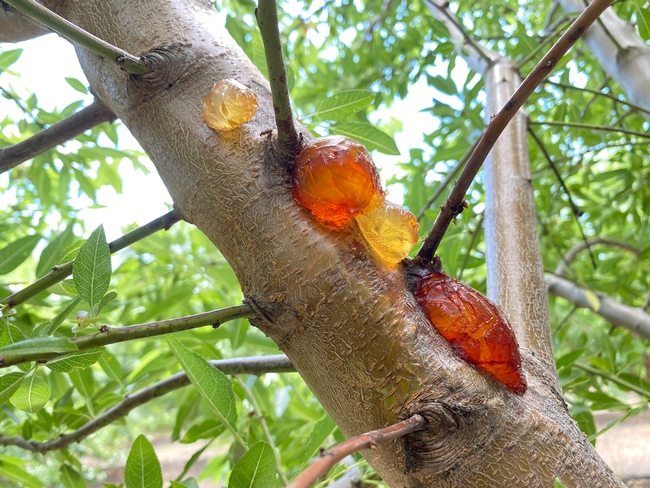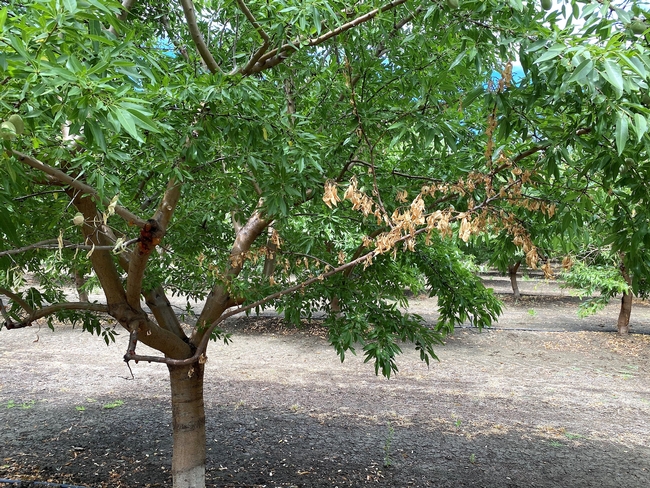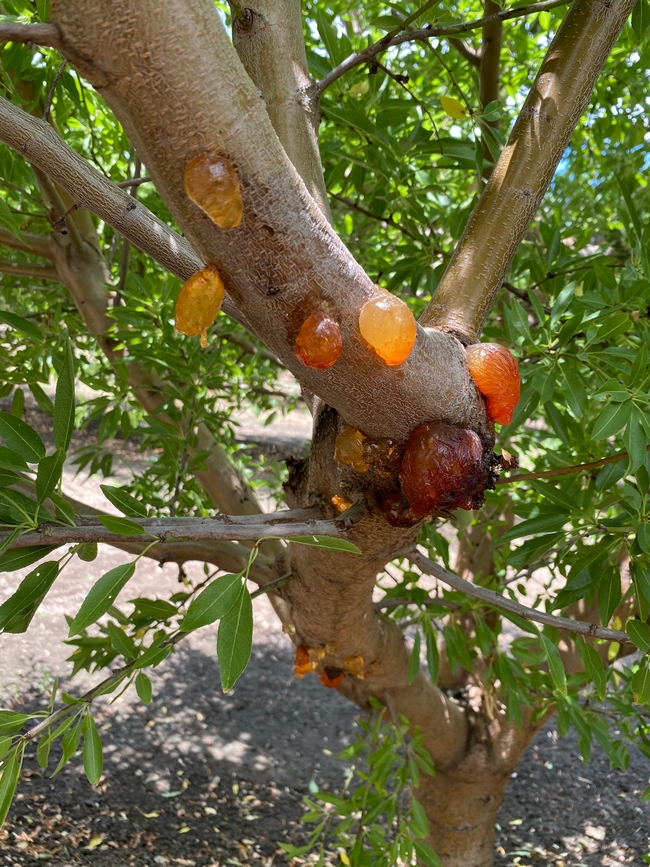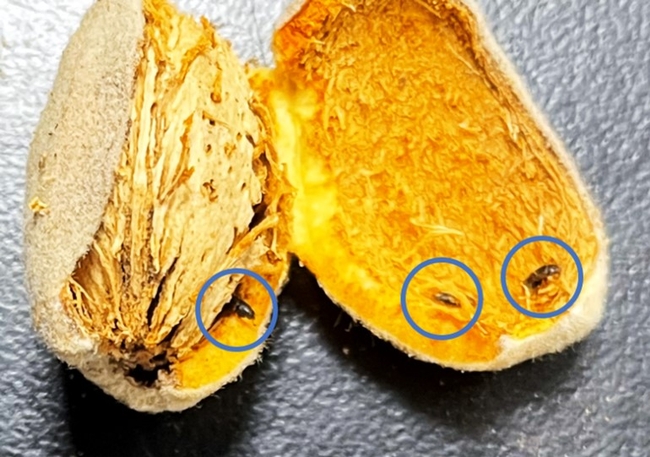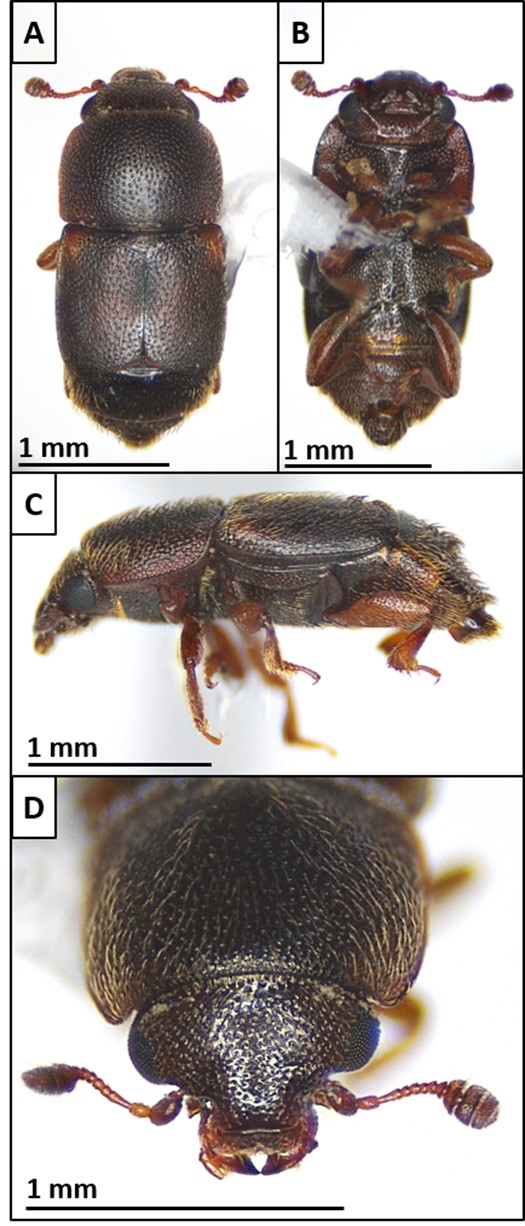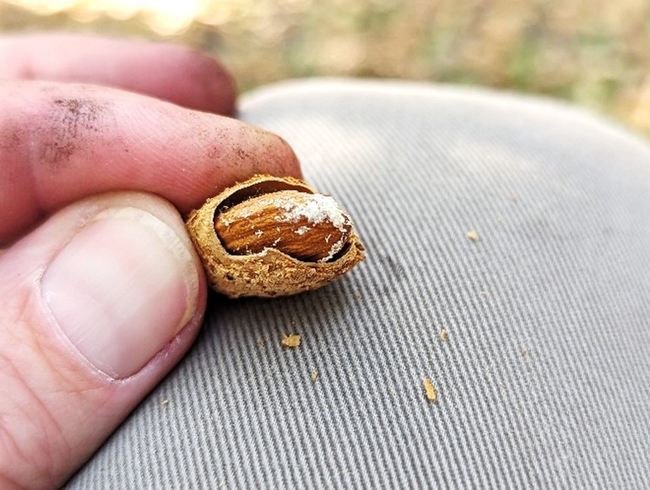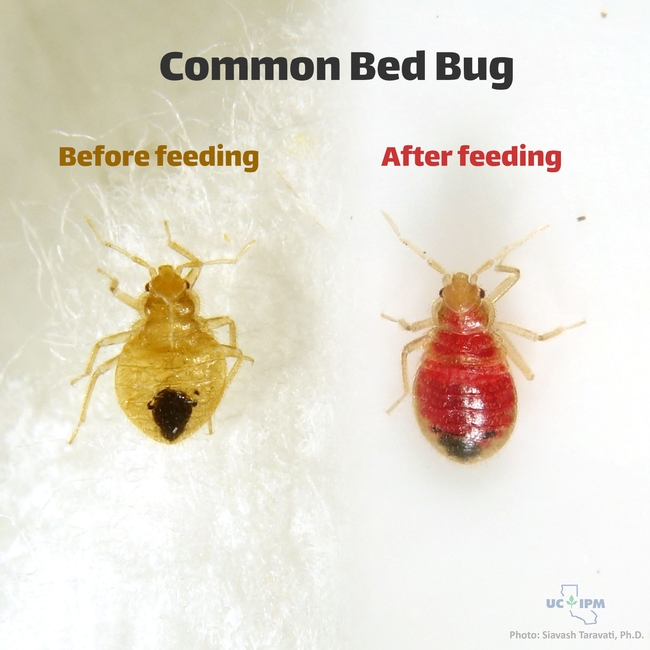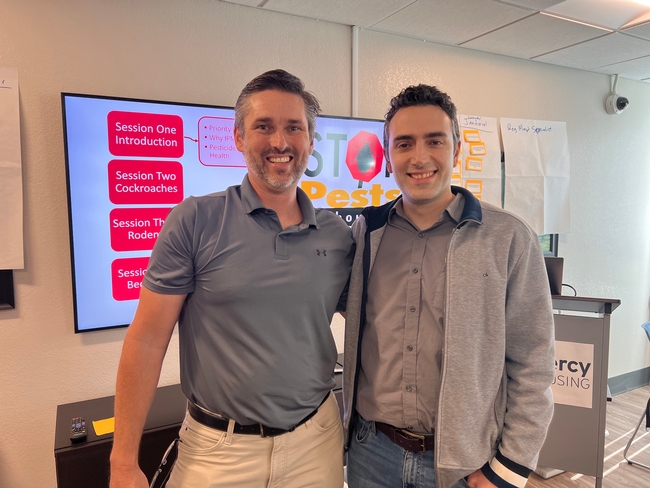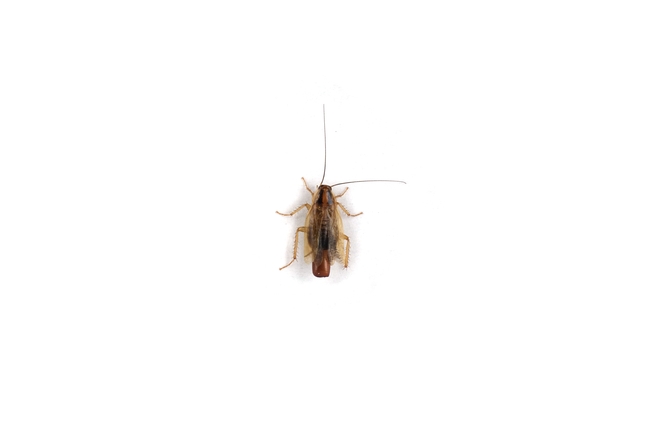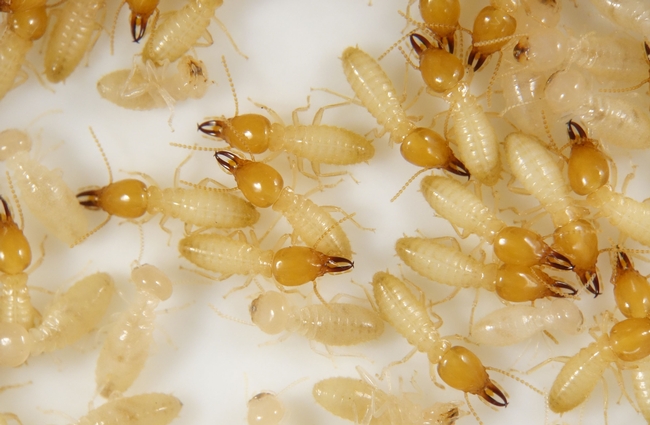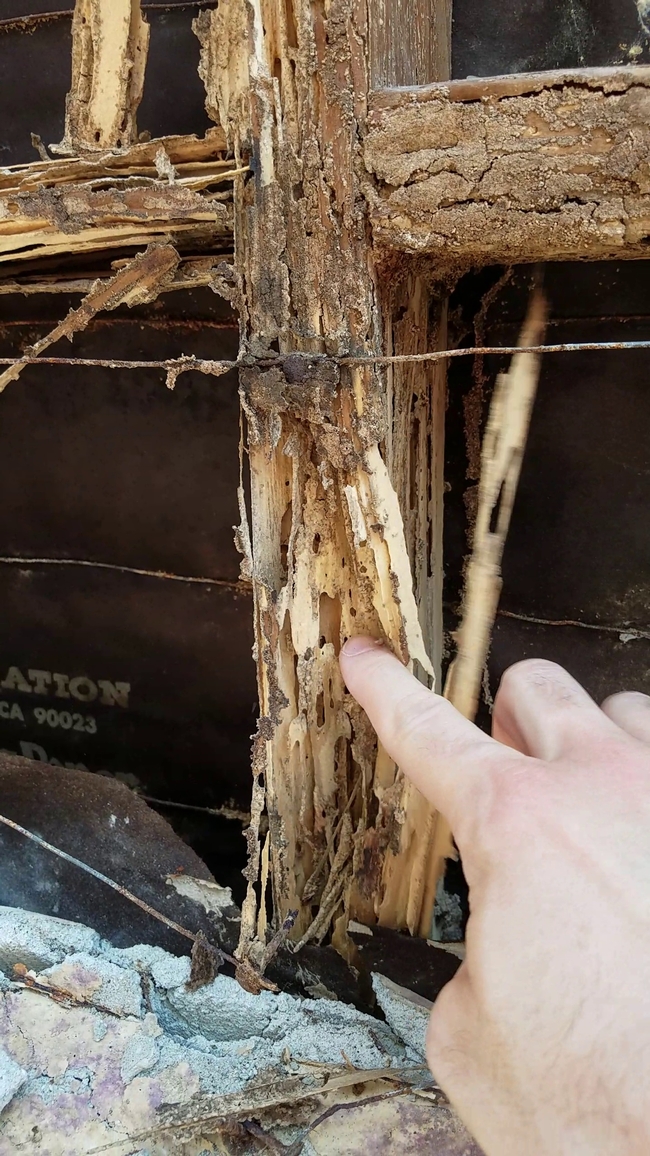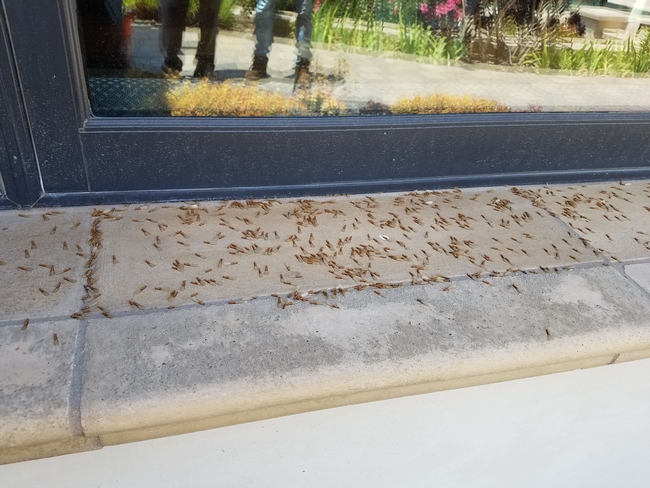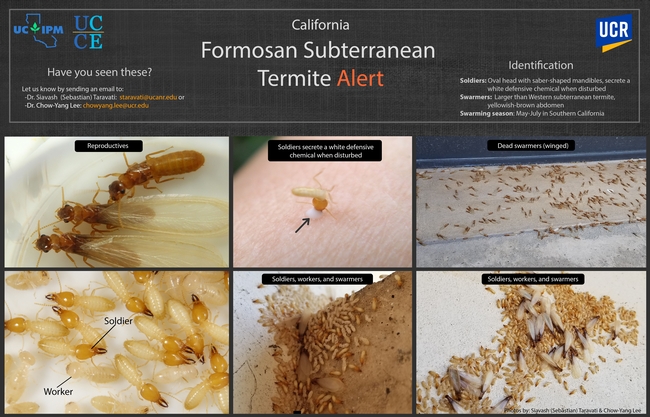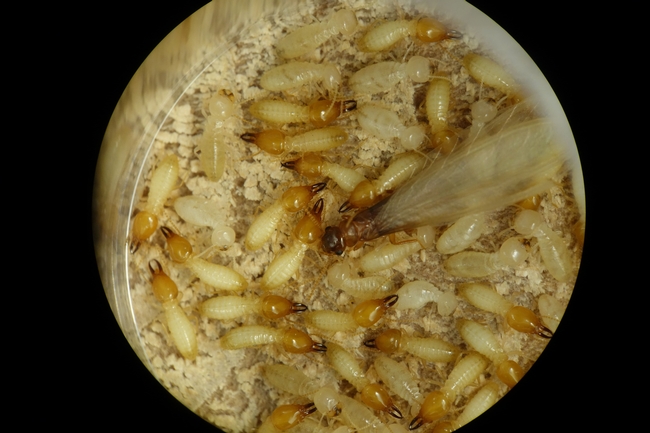Posts Tagged: IPM
Diagnosing herbicide problems takes detective work
Field day offers examples, tips for solving the mystery
A grower applies an herbicide to his tomato plants, or thinks a neighbor's treatment is drifting over her almond trees. A short time later, the leaves start to bleach or shrivel. Was it the herbicide? Or maybe water stress? Soil nutrients? Perhaps an insect?
Figuring out the causes of crop problems takes detective work, and like solving any mystery, it starts with knowing the signs, gathering evidence and asking questions.
The Diagnosing Herbicide Symptoms field day at UC Davis was an opportunity to see, up close, the shriveled cotton, scorched corn and dying sunflowers that can result when herbicides are applied incorrectly. Using the right herbicide – in the right proportion, at the right time and in the right field – can make the difference between a thriving crop and a financial loss.
A top take-away to avoid problems: “Don't do stuff at night!” laughed Becky Wheeler-Dykes, a UC Cooperative Extension farm advisor attending the June 26 event to better serve growers in Glenn, Tehama and Colusa counties. “The packages look the same. People grab the wrong jug.” And then, disaster.
Instructors were Brad Hanson, professor of Cooperative Extension; and Kassim Al-Khatib, the Melvin D. Androus endowed professor for weed science; both in the Department of Plant Sciences. They were joined by John Roncoroni, a Cooperative Extension emeritus farm advisor rooted in the department's weed science program. Attendees were a mixture of people from agriculture, industry, government officials, university researchers and Cooperative Extension advisors. The event was hosted by the Weed Research and Information Center, based in the Department of Plant Sciences.
Out in a field west of campus, visitors could see the progression of damage, from control plots with green and healthy crops to plants that looked sadder as herbicide concentrations increased. Visitors could see the patterns of damage for common foliar chemicals such as glyphosate, paraquat, and 2,4-D, as well as soil-applied herbicides from several chemical classes.
“There's a lot of detective work,” said Stephen Chang, a master's student in Hanson's lab aiming for a career in Cooperative Extension. “For example, the company that makes the herbicide says there shouldn't be a problem, but the grower says, there is a problem. This course helps with developing the skills to figure out what happened.”
It might not be the herbicide at all
Detective work and problem-solving frame the approach, Hanson explained. The cause of crop damage can be simple or complex. Like a good mystery, what appears to be a clue can turn out to be a red herring. Professionals need to draw on their inner Sherlock Holmes to observe and document symptoms, look for patterns in the plants and in the field, ask questions, gather information about the larger environment and collect samples.
An herbicidal Agatha Christie would then suggest: What if it's not herbicide damage at all? Participants learned to consider the possibility of insects, pathogens and viruses, as well as problems with water, nutrients, soil condition and even root damage from cultivation practices.
Hanson recalled puzzling over symptoms he found in an orchard. The culprit? “A leaking natural gas line,” he said.
More resources for herbicide issues
Participants also heard from Molly Mathews, deputy agriculture commissioner from Yolo County, on how a field investigation is conducted. Lawyer Robert Davies, of Donahue Davies LLP in Folsom, outlined the basics of what happens when there are lawsuits related to crop damage from herbicide drift.
The Diagnosing Herbicide Symptoms field day is part of a larger program of education and outreach offered through the Weed RIC, said director Julia Stover-Blackburn. It was the first time the event has been offered since the COVID-19 pandemic, she added.
- For more information about field days and resources, visit the Weed RIC webpage.
- For a thorough discussion of herbicide symptoms, visit this page overseen by Al-Khatib and sponsored by University of California Agriculture and Natural Resources.
- This online course follows an earlier version of the Diagnosing Herbicide Symptoms field program.
This story was originally published on the UC Davis Department of Plant Sciences website.
Almond growers should prepare for possibility of unusual disease outbreak
Wet winter, El Niño create favorable conditions for aerial Phytophthora pathogen
With heavy rains in the forecast amid strengthening El Niño conditions, almond growers should be on the lookout for a rare disease that can cause severe damage to their orchards, according to Florent Trouillas, a University of California Cooperative Extension specialist in fruit and nut pathology.
Phytophthora, soilborne microorganisms dubbed “water molds” because of their dependence on water, typically cause root and crown rot at the base of trees. But a few aerial Phytophthora can travel upwards and infect the higher parts of the tree. One species – Phytophthora syringae – is drawing special attention due to an unprecedented outbreak last winter, fueled by the atmospheric rivers that lashed California.
“It was found statewide – meaning in every almond-producing county – and disease incidence in orchards ranged from 10% of the trees infected to 75%,” said Trouillas, a UC Davis plant pathologist whose lab is based at UC Agriculture and Natural Resources' Kearney Agricultural Research and Extension Center in Parlier.
Trouillas and his colleagues, UC Davis graduate student Alejandro Hernandez and UC Riverside plant pathology professor Jim Adaskaveg, recently published a detailed online article describing the pathogen, which can infect a range of crops but mainly impacts almonds in California.
Although it doesn't kill the tree, the disease causes branch dieback that requires significant additional work and expense for almond growers. In 2022, almonds were the state's fourth-highest valued commodity, at $3.52 billion.
During last year's aerial Phytophthora outbreak, researchers also observed a new and troubling phenomenon: P. syringae, historically known to attack the cuts caused by pruning, was directly infecting the young shoots on almond trees – without any wounds.
“This was really the first time we had seen widespread evidence of infection on the twigs,” Trouillas said.
Although generally rare, outbreaks of P. syringae have been traditionally associated with wet El Niño years, according to Trouillas – and recent and persistent rain across the state should have growers on high alert.
Prune in dry weather, monitor, mitigate if necessary
While almond growers tend to prune during the downtime of winter, they should keep an eye on the forecast and aim for a 10- to 14-day window of dry weather to perform those tasks, whether training young trees or maintaining the established ones.
“If growers were to prune around a rain event – before, during or shortly after – this increases the likelihood of infection because this pathogen moves around with water,” Trouillas explained.
Researchers speculate that P. syringae, normally found in the soil, gets carried into the upper parts of a tree through strong winds and heavy rain. Alternatively, harvest processes like shaking and sweeping also produce air movements that may blow the microorganism into the canopy, where it waits for a favorable wet environment. The pathogen then attacks the wounds or young shoots, producing characteristic cankers and gumming.
The patterns and colors of the gum balls are keys to diagnosing an infection of this particular aerial Phytophthora. Starting around bloom time (mid-February), growers should monitor pruning wounds and young shoots on their trees, especially in the canopy, for signs of the disease.
The unique coloration of the gum balls – ranging from gold and amber to dark burgundy to bright red (see photos) – generally indicates P. syringae infection. But growers are urged to contact their local Cooperative Extension advisor for confirmation.
“It is super critical for growers that, whenever they see gumming, not to assume that it is this aerial phytophthora, because there are many other diseases that can cause gumming on the tree,” Trouillas said.
If the diagnosis is confirmed, growers may apply a compound that can mitigate the infection. The plant pathologists' recent writeup describes several curative treatment options, as well as a preventive measure that reduces the amount of pathogen in the soil and thus the likelihood of infection.
For more information on the pathogen's history and biology, as well as various options for disease management, visit the article on Sacramento Valley Orchard Source: https://www.sacvalleyorchards.com/almonds/trunk-soil-diseases/aerial-phytophthora-outbreaks-in-wet-years.
New pest infesting almonds and pistachios in the San Joaquin Valley
Crop sanitation will be key to controlling the invasive carpophilus beetle
Growers and pest control advisers (PCAs) should be on the lookout for a new pest called carpophilus beetle (Carpophilus truncatus). This pest was recently found infesting almonds and pistachios in the San Joaquin Valley, and is recognized as one of the top two pests of almond production in Australia. Damage occurs when adults and larvae feed directly on the kernel, causing reductions in both yield and quality.
Populations of carpophilus beetle were first detected in September in almond and pistachio orchards by University of California Cooperative Extension Specialist Houston Wilson of UC Riverside's Department of Entomology. Pest identification was subsequently confirmed by the California Department of Food and Agriculture.
Wilson is now working with Jhalendra Rijal, UC integrated pest management advisor, North San Joaquin Valley; David Haviland, UCCE farm advisor, Kern County; and other UCCE farm advisors to conduct a broader survey of orchards throughout the San Joaquin Valley to determine the extent of the outbreak.
To date, almond or pistachio orchards infested by carpophilus beetle have been confirmed in Stanislaus, Merced, Madera and Kings counties, suggesting that the establishment of this new pest is already widespread. In fact, some specimens from Merced County were from collections that were made in 2022, suggesting that the pest has been present in the San Joaquin Valley for at least a year already.
“It has likely been here for a few years based on the damage we've seen," Rijal said.
This invasive beetle overwinters in remnant nuts (i.e. mummy nuts) that are left in the tree or on the ground following the previous year's harvest. Adults move onto new crop nuts around hull-split, where they deposit their eggs directly onto the nut. The larvae that emerge feed on the developing kernels, leaving the almond kernel packed with a fine powdery mix of nutmeat and frass that is sometimes accompanied by an oval-shaped tunnel.
Carpophilus beetle has been well-established in Australia for over 10 years, where it is considered a key pest of almonds. More recently, the beetle was reported from walnuts in Argentina and Italy as well. Carpophilus truncatus is a close relative to other beetles in the genus Carpophilus, such as the driedfruit beetle (C. hemipterus) that is known primarily as a postharvest pest of figs and raisins in California.
Monitoring for carpophilus beetle is currently limited to direct inspection of hull split nuts for the presence of feeding holes and/or larvae or adult beetles. A new pheromone lure that is being developed in Australia may soon provide a better monitoring tool for growers, PCAs and researchers.
“We're lucky to have colleagues abroad that have already been hammering away at this pest for almost a decade,” said Haviland. “Hopefully we can learn from their experiences and quickly get this new beetle under control.”
The ability to use insecticides to control carpophilus beetle remains unclear. The majority of the beetle's life cycle is spent protected inside the nut, with relatively short windows of opportunity available to attack the adults while they are exposed. The location of the beetles within the nut throughout most of their life cycle also allows them to avoid meaningful levels of biological control.
In the absence of clear chemical or biological control strategies, the most important tool for managing this beetle is crop sanitation.
“Given that this pest overwinters on remnant nuts, similar to navel orangeworm, crop sanitation will be fundamental to controlling it,” Wilson said. “If you needed another reason to clean up and destroy mummy nuts – this is it.”
In Australia, sanitation is currently the primary method for managing this pest. And here in California, new research and extension activities focused on carpophilus beetle are currently in the works.
“It's important that we get on top of this immediately,” said Wilson. “We're already starting to put together a game plan for research and extension in 2024 and beyond.”
If you suspect that you have this beetle in your orchard, please contact your local UC Cooperative Extension farm advisor (https://ucanr.edu/About/Locations/), County Agricultural Commissioner (https://cacasa.org/county/) and/or the CDFA Pest Hotline (https://www.cdfa.ca.gov/plant/reportapest/) at 1-800-491-1899.
UC Cooperative Extension advisor helps property managers prevent pests in the home
Living with pests, or “unwanted guests” as some put it, can take a physical, mental and economic toll. For people living in multi-family unit housing, like an apartment complex where everyone lives under one roof, a single infestation of insects or rodents can expose all residents.
Using integrated pest management, or IPM, residents and property managers can detect infestations early and control severe ones and protect people. IPM programs can also save money. IPM saved a 75-unit complex in Contra Costa County $11,121 annually. Similarly, in Santa Clara County, a 59-unit complex saved $1,321 on pest control annually after implementing a proactive IPM program.
This summer, regional directors, property managers, residential service coordinators, maintenance managers and groundskeepers of Mercy Housing – a nonprofit organization that provides affordable, low-income housing – gathered in Long Beach to learn about in-home IPM. The session was led by Siavash Taravati, University of California Cooperative Extension area IPM advisor for Los Angeles, Orange, Riverside and San Bernardino Counties, and
Josh Shoemaker, an entomologist and private consultant.
Taravati and Shoemaker collaborated with StopPests in Housing, a national program out of Cornell University's Northeastern IPM Center, which seeks to improve pest control in affordable housing and teach management practices for cockroaches, bed bugs and rodents within and around the home.
During their presentation, Taravati introduced participants to the IPM principles and emphasized the importance of monitoring pests.
“IPM is all about making informed decisions which requires knowing the latest status of an infestation,” explained Taravati. “That's where monitoring comes into play. It can help us to identify the exact species we are dealing with as well as telling us if an infestation is growing or shrinking.”
“Monitoring is foundational,” agreed Shoemaker. “If a program does not include monitoring, it's not an IPM program.”
According to Shoemaker, the benefit of partnering with UC IPM is their sharp focus on general IPM, which includes monitoring. “It's real IPM, that prioritizes the well-being of the public,” said Shoemaker, who's eager to continue working with Cooperative Extension and Taravati to ensure that children are growing up in safe environments.
Pest control treatments commonly take place following a serious infestation or several complaints, but IPM promotes constant monitoring to prevent heavy infestations from ever happening. It's a proactive approach rather than a reactive or emergency-response. For many attendees, the training revealed a need to engage with pest management operators more closely.
Training prompts changes that improve safety for residents
Pest management operators commonly use pesticide sprays to control pests. Besides inconveniencing residents, forcing them to do extensive preparations and evacuate their unit until it's safe to return, sprays increase exposure risk to pesticides since the aerosols can linger and land on surfaces.
Instead, Taravati and Shoemaker recommend using gel baits, which are much safer to apply and can target a specific area of a home, including crevices, instead of along all the walls.
“Now that I'm more informed, I'll be speaking to my contractor to discuss how we can switch their approach from a bug spray to a gel,” said Leonardo Pinuelas, a maintenance manager for Mercy Housing.
Pinuelas is not the only one wanting to modify their program, however. According to feedback from staff members at the Housing Authority of the City of Los Angeles who experienced the same training earlier this year, they prompted their team to amend their pest extermination to include dusting, or applying insecticidal dusts, against roaches, and to review and update their existing IPM plan and practices where appropriate.
Cindy Wise, area director of operations for Mercy Housing, said that in her 35 years, this was one of the few trainings that engaged her staff so actively. “I couldn't help but text my regional vice president to say that our managers were actively participating and asking questions. That doesn't happen often, not even in our own meetings,” said Wise.
Many of the attendees, with their new understanding of how cockroaches move through a structure, shared that they are eager to return to work to meet with residents and support them.
“If you've got roaches in one unit, you've got them in the entire building,” Wise said.
Shoemaker recalls the words of Judy Black, senior technical entomologist for Orkin, and Dini Miller, entomologist at Virginia Tech, who urge the importance of inspections and documentation as IPM best practices.
Although reporting pests in the home can make one feel embarrassed, Wise said she is more interested in making residents feel empowered to not only report signs of infestation to the staff, but to their neighbors.
Training residents is certainly beneficial, but as experts such as Black and Miller have pointed out, housing managers must do their part, instead of scapegoating tenants for their cleaning habits.
StopPests provides free IPM training and technical assistance to Housing and Urban Development assisted properties. If you are interested in the training provided by Taravati and Shoemaker, in collaboration with StopPests, visit StopPests.org for more information.
Cooperative Extension advisor, UC experts tackle ‘nightmare’ termite
During summer swarming season, homeowners urged to check for signs of Formosan subterranean termite
In the lottery of troublesome termite infestations, “Roger,” a Rancho Santa Fe homeowner, hit the jackpot (a pseudonym is used to protect his privacy). In 2021, his house in San Diego County was identified as home to only the fourth documented colony of the Formosan subterranean termite (Coptotermes formosanus) in California.
“FST is one of the most destructive urban pests in the world,” said University of California, Riverside entomologist Chow-Yang Lee, affiliated with UC Agriculture and Natural Resources through the campus' Agricultural Experiment Station. “It's also the only termite species listed in the ‘100 of the World's Worst Invasive Alien Species.'”
Endemic to East Asia, this termite is now established in many tropical and subtropical regions, including across the American South. Annually, its infestation costs more than $4 billion in control measures and damage repairs of structures in the U.S.
FST was first discovered in California in La Mesa (San Diego County) in 1992, and it was rediscovered in that city in 2018. Another infestation was reported in Canyon Lake (Riverside County) in 2020. And then, the following year, Roger received his surprise.
“Imagine being in your kitchen looking at your drywall and it's totally normal and then the next day there's a four-inch hole there and you're like ‘What the heck is that? Who put their elbow into the drywall?'” he recalled.
FST colonies can reach millions of individuals
Roger hired a pest control company, Green Flash Pest Control, which sprayed a powerful liquid termiticide in the soil around the house. But the termites – workers, soldiers and winged “alates” – continued to appear. The company tried a second application of soil treatment. But, again, the termites kept popping up.
“We were deeply concerned about the potential damage these termites could cause to the home since these invasive termites are extremely destructive,” said Eric Veronick, director of operations at Green Flash. “Unfortunately, there isn't a whole lot of information available on the behavior and management of this termite in California.”
The company called upon Siavash Taravati, a UC Cooperative Extension urban Integrated Pest Management (IPM) advisor based in Riverside.
“Some colonies are aerial, meaning that they are formed above the ground with limited or no connection to the soil – in such cases, soil treatment using contact insecticides may not be very effective in managing these termites,” Taravati said. “Furthermore, contact insecticides usually kill a much smaller portion of the colony when compared to termite baits.”
To make matters worse, once FST is established in an area, there have been no records of successful eradication anywhere in the world, according to Taravati. He added that a major reason why the Formosan subterranean termite is so destructive is the enormous size of their colonies.
“Their colonies can reach millions of individuals, versus most native subterranean species that reach a few hundred thousand individual termites per colony,” Taravati explained.
This termite, through its sheer numbers, can turn the wood in a structure into a “spongy kind of cake,” in Taravati's words. More than 10 pounds of wood in a house can be eaten by a mature colony each month. The financial hit for a homeowner can be substantial, up to tens of thousands of dollars – not to mention the increased risks to safety.
“Anything from studs to rafters to door frames and window frames – everything is going to be compromised, if the termites are left unchecked. And then, as soon as we have a major stress on the building, let's say there's a big storm or an earthquake – there's a high risk of at least part of the building collapsing,” said Taravati, who also noted that, unlike California native subterranean termite species, FST can attack and kill live trees and plants.
“These termites can be a nightmare,” he said.
Summer is ‘swarming season' for FST
Since the Rancho Santa Fe case in 2021, four more colonies have been documented, in La Mesa again and also in Highland Park, Hollywood Hills and La Verne (the latter three in Los Angeles County). Taravati said it's possible that FST has been spreading via structural lumber or potted plants and soil.
And even if a colony appears to be eliminated at a certain locale, Taravati noted, there is always the chance that part of the colony survives or more colonies of termites already have been established in nearby locations, as a result of swarming termites from the originally infested property.
Although nominally “subterranean,” certain members of an FST colony grow wings and fly to nearby locations to establish new colonies. These winged alates are also called swarmers because of their behavior during the “swarming” season, when termites mate and reproduce.
For the Formosan subterranean termite, that swarming season in California is late May through early August, so now is the time for homeowners and building managers in southern and central California to keep an eye out for those winged termites.
“If you experience a termite swarm in your house, contact a pest management professional and keep some termite samples in a Ziploc bag in the event you need to send the samples to UC Riverside for morphological and DNA-based identifications,” said Lee, who added that it's a good idea to periodically check your structure for signs of infestation, such as wood damage or shelter tubes (mud tubes).
Lee said FST swarmers have a lighter colored body compared to the dark color of native subterranean termites and the orange-brown body of drywood termite swarmers (see this flyer for additional identification information).
Following an especially wet winter, there's a chance California could see more FST infestations, as this termite generally requires moist environments to thrive, Lee added. He recommends that concerned community members seek professional advice.
“Do not attempt to control an FST infestation by yourself,” Lee said. “This is not your typical native Californian subterranean termite species; they are highly destructive, and you want to intercept the problem with the right strategy before it's too late.”
Homeowner: ‘I owe them my house'
In Roger's case, Taravati enlisted the help of Lee and his UC colleague, Greg Kund. They made multiple visits to inspect the home and analyze the situation – going “above and beyond,” according to Roger.
At Lee's suggestion, they used a caulk gun to insert a gel-like experimental bait into the wall where the termites were coming out. Once spread and passed on to the other nestmates, the product – which contains a chitin synthesis inhibitor (a type of insect growth regulator) – interrupts the termites' development so they are unable to properly molt and replace the short-lived “workforce” of foragers and soldiers. The colony eventually collapses and is eliminated.
“Generally speaking, IGRs are much more effective, but they require more patience,” Taravati explained. “You're not going to see the results the next day, or two-three days. You're going to see the results in a few weeks – but when you see the results, it's massive.”
And that's exactly what Roger and Green Flash Pest Control saw.
“Soon after their bait application, the termites stopped emerging from the walls and that gave us and the homeowner a big sigh of relief,” Veronick said. “I appreciate their expertise and dedication in helping us get rid of this destructive pest."
Roger said he is immensely grateful to the UC team.
“They were fantastic; I owe them my house,” he said. “They were super gracious and helpful and responsive and – ultimately, the thing I care most about – they were effective; they fixed the problem. Here we are two years later and – knock on wood, or maybe I should knock on something else! – everything is good.”
Lee also credited Taravati for bringing his knowledge and “can-do” attitude to communities across Southern California.
“He is highly knowledgeable and always able to come up with feasible solutions,” Lee said. “We need good Cooperative Extension urban IPM advisors like Siavash who could provide good advice and bring solutions to the stakeholders, be they homeowners or pest management professionals.”
Taravati said community members need to maintain their vigilance and urges them to download and share the FST flyer that includes identification tips and contact information. He said they are always free to e-mail him with their concerns and photos of suspected FST – not only to help stop the spread of the pest but to expand scientific understanding.
“This termite is so new to California – even for us, as researchers. Despite being in La Mesa since the 1990s, it wasn't until 2020 when these termites were detected in other places, including Riverside and Los Angeles counties,” Taravati explained. “All of us need to learn more about this pest and closely monitor the behavior of this pest.”





